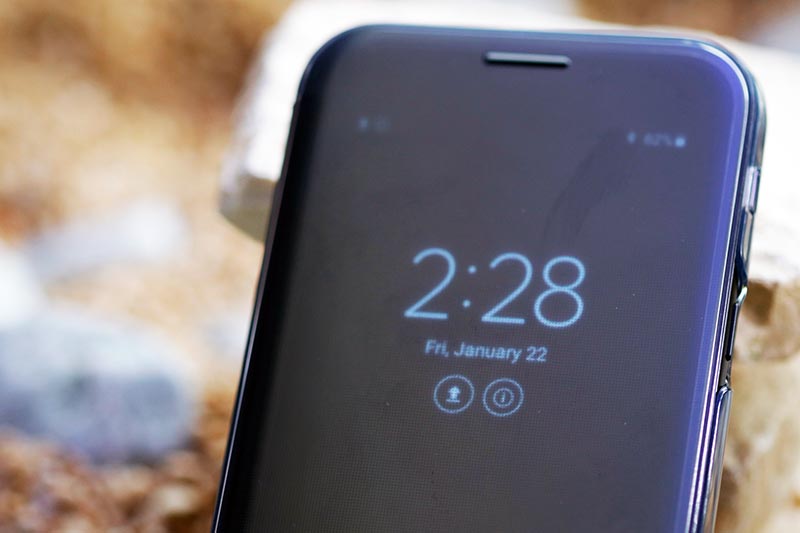Unlike the other operating systems, Android experience can vary to an incredible degree between two smartphones from different OEMs. Provided you happen to be a hardcore Android user, you might have already underwent the experience of rooting your smartphone. Android rooting, by far, happens to be one of the most novel and applied ways in which a user can customize one’s experience on a smartphone.
TechJuice have been trying its best to become a one-stop hub for all your Android rooting needs. We started off by explaining in detail what Android rooting really is. We have already been doing some rooting guides. Today we will be telling you about rooting your Samsung Galaxy A7 (2017) running Android 6.0.1 Marshmallow, using the SuperSU package on top of the CWM custom recovery. Check out the more details about Samsung A7 phone along with the updated phone price in Pakistan.
Before proceeding make sure that you have ClockworkMod installed on your Samsung Galaxy A7 (2017) before proceeding. If you don’t know how to install a custom recovery, let us know and we would be more than happy to do a writeup on how to install a custom recovery on this smartphone. The bootloader of the smartphone should also be unlocked.
Disclaimer: Rooting your Samsung smartphone will void its manufacturer’s warranty and you may damage your device. In case of any damage in any form, TJ is not to be held responsible in anyways. Proceed at your own risk.
Process:
1. Back-Up
The chances are less that you would loose your data and damage the device. It is but always recommended that you do a back-up of the data stored on your smartphone.
Either
- Copy all the data from you mobile to your SD card and remove it.
- Transfer the data to your PC using data cable.
- Samsung backups can also be done through using Samsung Kies.
2. Download USB driverS for PC
Download the drivers and install them on your computer, so that you can connect your smartphone with your PC later.
You can use the following links.
- Download Samsung USB Drivers from here
- Download Samsung KIES (it has the drivers)
3. Enable USB debugging mode on your smartphone
You have to do this step before connecting your smartphone to the PC. In order to enable the USB debugging mode, follow these steps.
- Go to Settings
- Scroll down and find ‘Developer Options’. Tap there
- Enable USB debugging and OEM Unlocking option
The Developer Options is coming invisible by default. If you haven’t so far troubled to play around with it, the chances are you won’t be able to find it. Make it visible by following these steps.
- Go to Settings
- Scroll down till you see “About Device”. Tap there
- Tap on Build Number for 5-7 times to make the Developer Options visible
- Now follow the standard steps to enable USB debugging and OEM Unlocking
4. Download the root package for your smartphone
After enabling USB debugging, you will be required to download the root package. Download SuperSU Root file from the following link.
After downloading the file to your PC, move it to the SD Card root area. Make sure it is not in any folder. Also check if your smartphone is connected to the PC. If yes, disconnect it.
5. Open your smartphone in Recovery mode
After disconnecting the smartphone from PC, boot your smartphone directly into the Recovery mode. Follow through these steps.
- Switch off your smartphone first.
- Press and hold the Volume Up and Power Button simultaneously.
6. Process on your mobile
After getting into the Recovery Mode you would need to do the following steps to flash the zip file you had in the SD card.
- Scroll down using volume buttons to the “Flash zip from SD card” option.
- Press the Power button to select it.
- Press the Power button again to select “Choose zip from SD card”.
- Using volume keys again, navigate to the file that you have stored in earlier step.
- Select it using the Power button.
- Confirm the installation.
After installation completes, retreat to the main recovery menu. From the main menu, choose the reboot now option. Power Button would be used for selection. After sometime your phone will reboot automatically. Once you see the homescreen, you can disconnect your smartphone from the PC. You can confirm if your device has correctly been rooted or not by looking for the SuperSU application in your application drawer.
Want such a how-to rooting guide of any other phone? Just mention name of the smartphone in the comments section below and we will be more than happy to look into it.
Image — Revu





 Top three platforms you can use to create your first blog
Top three platforms you can use to create your first blog